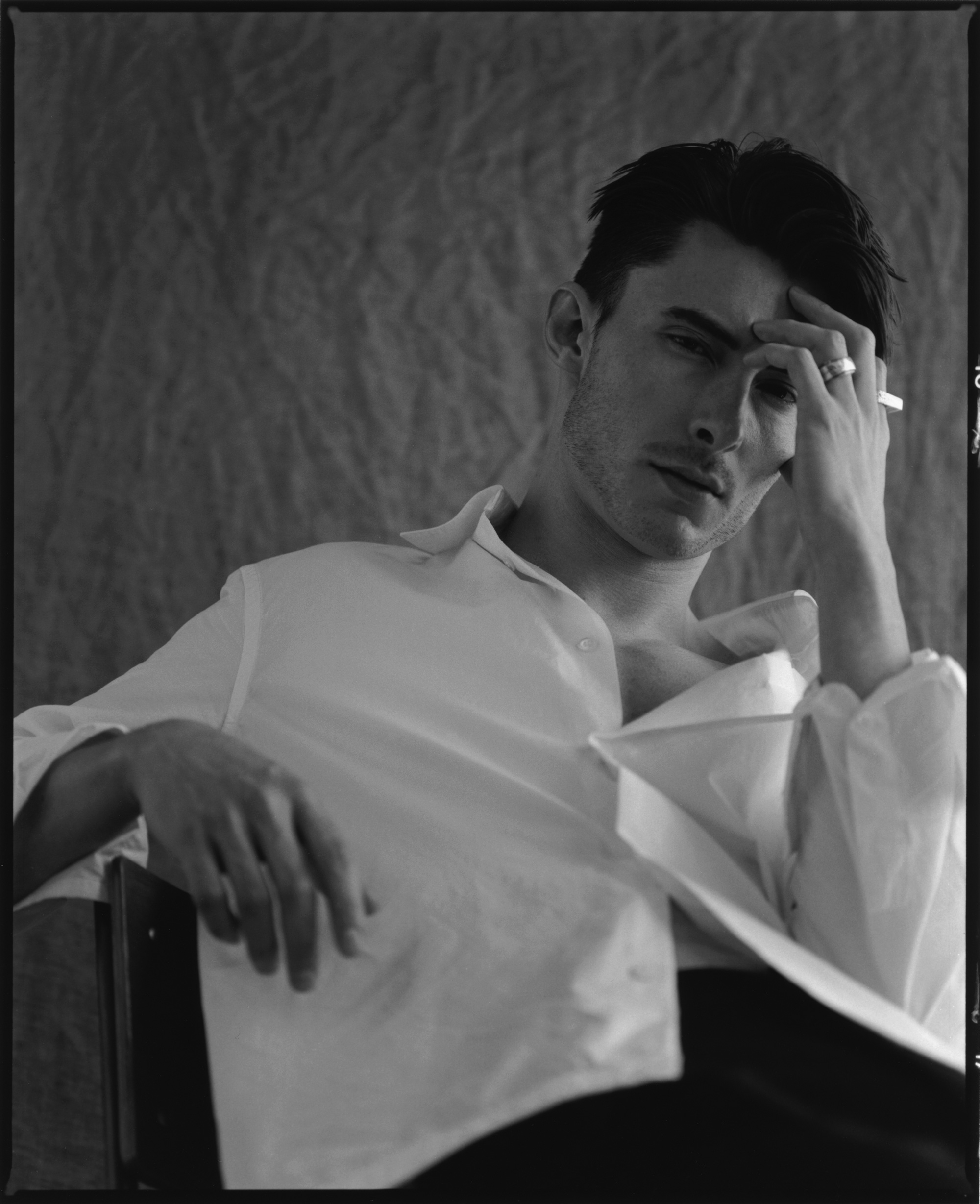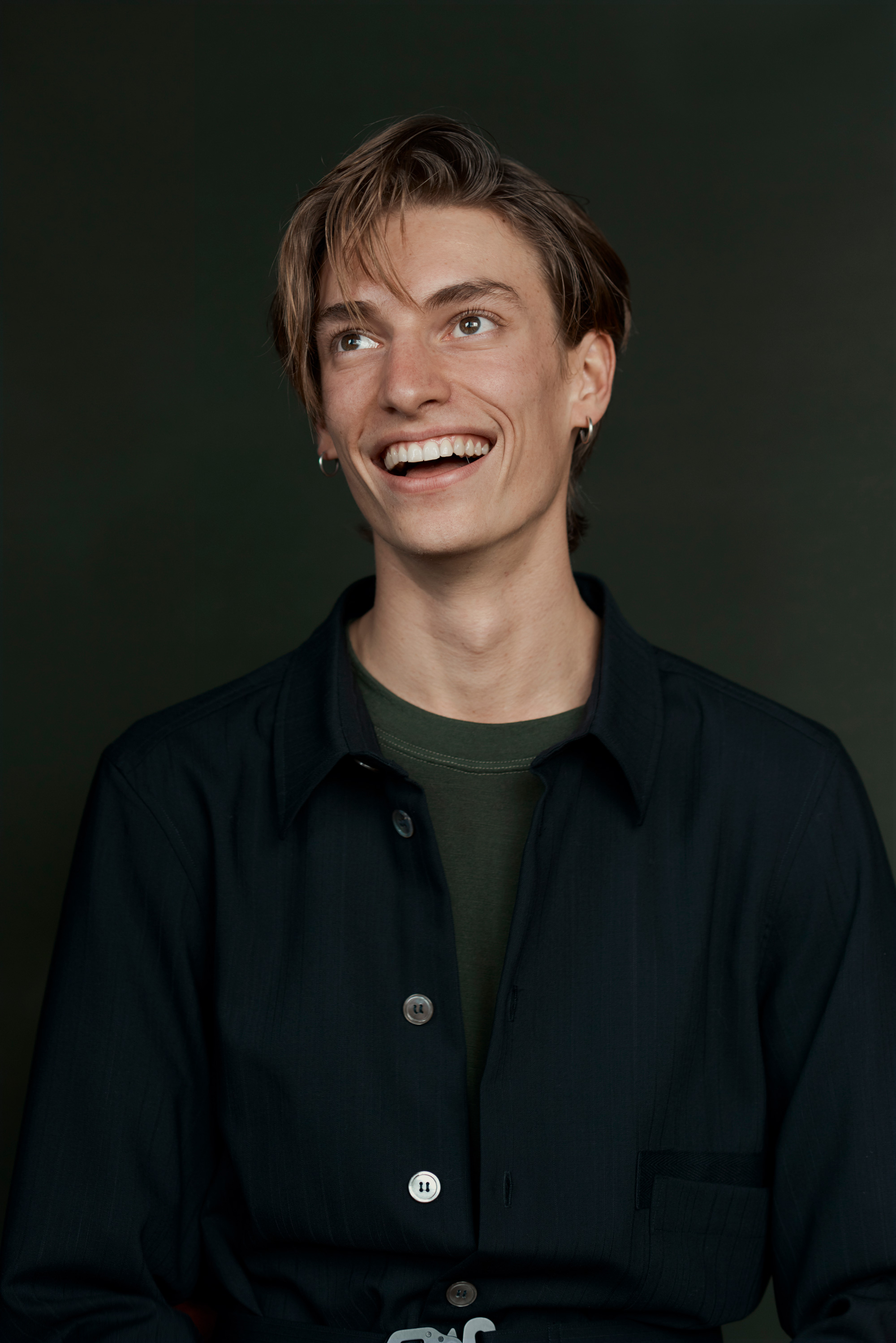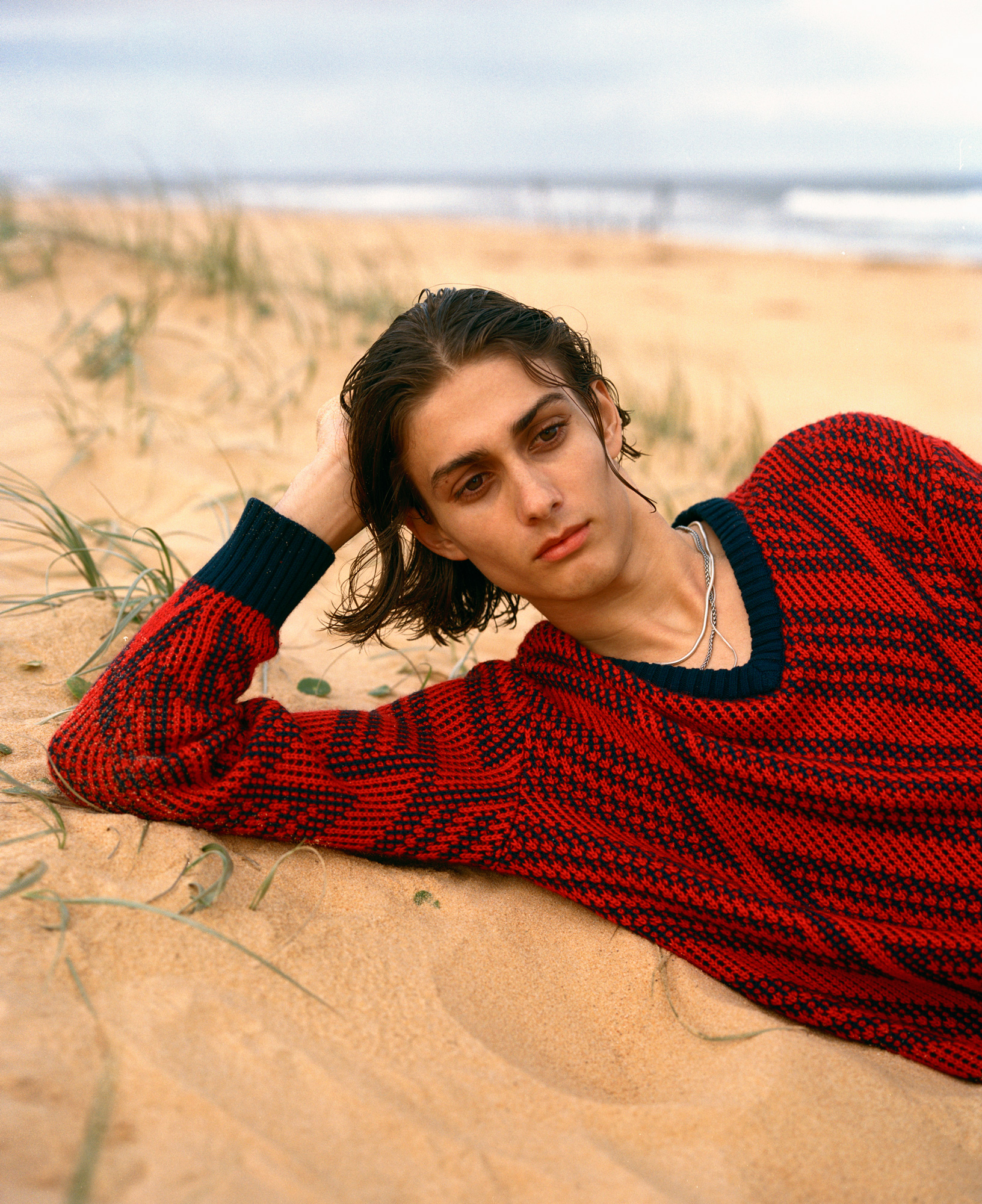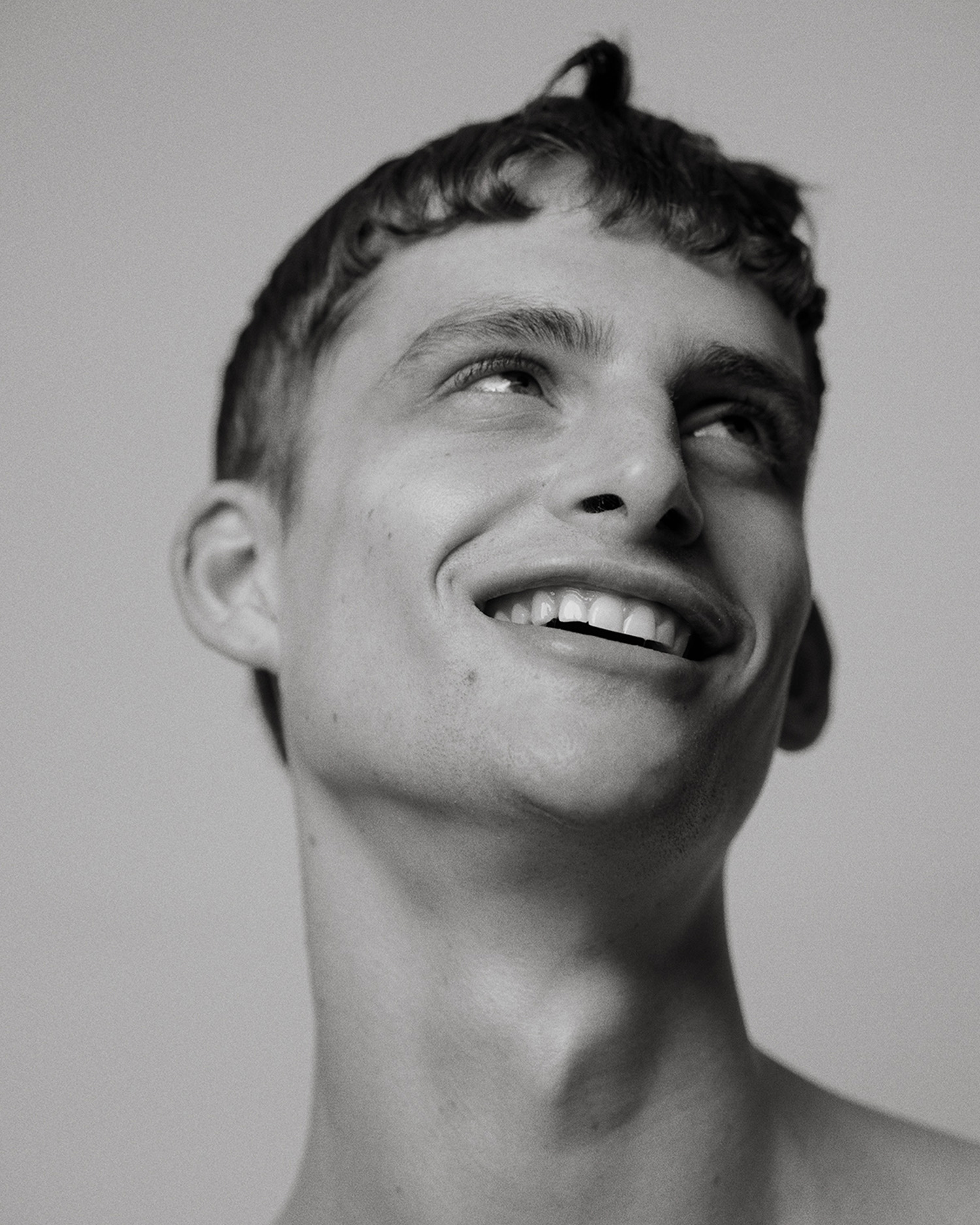BLAIR ARCHIBALD BLAIR ARCHIBALD

Words James Tawfik Photography Drew Wheeler Words James Tawfik Photography Drew Wheeler Words James Tawfik Photography Drew Wheeler Words James Tawfik Photography Drew Wheeler
Mens fashion is dull. Correction. Australian mens fashion is dull.
However, Blair Archibald, a New Zealand born and Melbourne based designer whose namesake label has been making waves since its conception in 2014 due to the emphasis on strong tailoring and silhouette, a juxtaposition of the usual relaxed narrative synonymous with Australian menswear. Blairs work is muted. A refreshing palette of mostly black, white and navy - absent are the blaring neons, logos and screen-print graphics associated with millennial fashion. Instead, the focus of BLAIRARCHIBALD is the impeccable construction, details and fabrication that goes into each and every garment. `I don’t think I’m redefining anything’ Blair said humbly when I asked about his menswear philosophy. ‘I am introducing a point of view that is inherently honest with what I believe to be good design in a marketplace that is still in the early stages of understanding contemporary men’s clothing.’
The fundamental principles of the BLAIRARCHIBALD brand are centred around the engineering of men’s garments. ‘Originally I started working in fashion because I was swept up in the ego vortex that comes with working in this industry,’ said Blair when I asked about his design philosophy, ‘then as I began setting up my design studio and really exploring and experimenting with the make side of clothing, I found myself more interested in building a brand with a deep reverence for menswear that is highly considered of fabric and of form.’ 3 years later, Blair won the prestigious International Woolmark Prize for Australia / New Zealand in Menswear and 2019 BLAIRARCHIBALD exhibited at the National Gallery of Victoria in partnership with Vogue Australia and Anna Wintour, where Blair met with Anna + Baz Lurhmann to present key pieces from his International Woolmark Prize collection. A moment that Blair describes as one of his proudest career highlights.
But does this reflect his own DNA?
‘I’ve certainly found intersections between my own design philosophy and my personal perspective on things.’ Says Blair ‘ I think there has to be a correlation otherwise you are completely segregated from your own work. The way I look at my own body of work is the same attitude I have towards other creative disciplines and having a strong ethical component to what I do reflects greatly on my concern for that to be consistent with my own buying behaviours.’

I ask about what inspires him and he humbly responds ‘Garments!’ referencing how clothing in general performs and behaves and the movement of fabric With a strong background in tailoring, Blair is heavily invested in how menswear is constructed as my background and explores a lot of tactile elements in traditional workwear garments finding ways to engage that with shape and form. ‘I also explore repurposing methods to inform new concepts and to uphold a more sustainable design process.’ But as we delve deeper into the conversation, I become immediately intrigued by his person.
What is the most common misconception of you? I ask with intrigue. ‘I’m not sure there is one’ he responds ‘although I know that one assumption of me is that I’m constantly judging people on their fashion choices or expecting that whenever I meet someone that they have to be wearing their best everything. My work is my own and the way I interpret clothing for myself and my clients has no bearing on my outlook on others, in-fact my own style can be reduced to a white t-shirt + cropped black trousers.’
But how has the concept of gender influenced his business?
‘I remember being at University and by the time I reached my final year I was the only male in the graduating class. I thought it was great because at that time I wanted a lot of attention and was a bit desperate to be different and endearing’ I asked him, referencing the stigma of being a male working in the fashion industry. I obviously don’t carry that same mindset anymore but we all go through those experiences particularly when we are trying to develop our own handwriting as creative thinkers.’ Blair who grew up in a rural town, his mothers side were loggers and his grandfather a Maori All Black in the 1950’s, quickly identified that he sat outside the regular conventions of masculinity which caused him to question his own identity.
‘I experienced gender identity issues when I was a teenager and there is definitely a sense of gender fluidity or a genderless quality to the way I design however I’ve always maintained that my work is driven as menswear.’

Like in his collection, Blair himself challenges the male archetype in his designs ‘I hope that through my work I can continue the conversation around gender conventions particularly the concept of women in menswear as I think this is a more interesting pathway than to just discuss ‘unisex’ garments. In fashion there is the expectation that any male entering the industry is going to be a homosexual but over the past 10 years that has been dismantled’ Blair references the The new generation who are creating a community blurred vision of what gender signifies in fashion. ‘This new visual narrative that mixes lingerie and proportion with the male form is refreshing and speaks volumes for how we are moving forward as a society. It is also very evident in the celebrity sphere with people like Ezra Miller who demonstrate an unapologetic approach to dressing.’
Blair to me has always been an enigma someone who I have watched and respected and never known anything about, but the more he talks, the more I realise that he is the role model I wish I had in my formative years and the mentor I wish I had when starting in the industry. In every sense, Blair is grounded and authentic so I ask him about the nay-sayers and how he remains so humble. ‘Oh there’s cynicism on a day to day basis. I mean that’s life, that’s part of the fight to pursue your own creative ambitions. As cliche as it sounds - the key is to have a sound understanding of who you are as a designer; to have absolute clarity on what your aesthetic is and what your brand signifies and to deliver that message with conviction. The sooner these components are identified, the easier it will be to fall back on them when you experience negativity or a sense of uncertainty on how to go forward. I try and avoid the whole ‘5 year plan’ thing as it feels too regimented. I’ve always created my own pathway and tried to operate on a wavelength that is realistic and something I can manage internally.’
Blair doesn’t operate on ego, he lets his work speak for himself.
But his voice is booming.

MORE BOY! INCOGITO
© BOY! Incognito 2020

